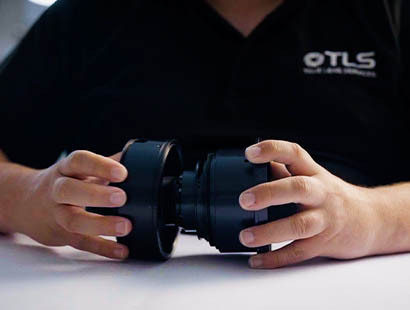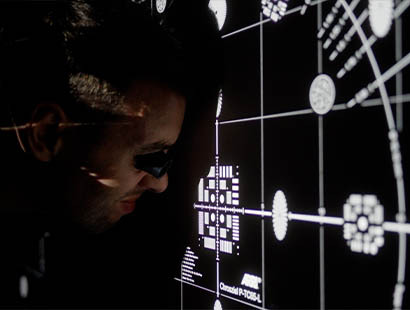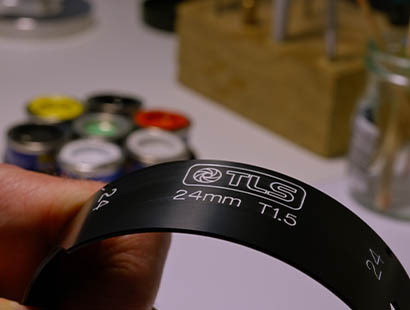Initial assessment
Once TLS receives your lenses, they are given a brief assessment to determine the optical condition of the lens, both physically and on projection. At this point, any necessary feedback is given.
Rehousing process
Each lens is worked on individually. Initially, the technical team will work from the assembly drawing to pick all the components that are needed for the rehousing process. All components are manufactured in house (except for bearings) at the TLS headquarters in Leicestershire. Once the parts are picked, they are checked and prepped, ready for the next stage in the process.

The lens is disassembled, and the optical cell is separated from the original mechanics/housing. All the original mechanics are then put to one side to be returned to the customer once the rehousing is complete. The optical is then serviced and cleaned, including the iris assembly if this is to be reused during the rehousing process. If a new circular iris is being installed, then the original iris will be returned with the old metalwork.
With the new components picked, prepped and optical unit serviced, it is now time to assemble the lens. The optical unit(s) are built into purpose made carriers that run inside the bore of the chassis to create the forward/backward movement needed to focus the lens. These modules are then loaded into the chassis and all other components assembled. Once the initial build of the lens is complete, we will set the back-focus of the lens and check the image on projection and collimation. At this point, we can tune the lens for best optical performance.

One of the main advantages of a TLS rehoused lens, is the focus system. The focus is driven using a non-linear cam based mechanical design, with just under 300 degrees of rotation. Even our floating element lenses take advantage of the non-linear cam. This is so the end user has a more evenly distributed focus scale. When the focus is racked from infinity to close focus, the optical unit(s) accelerate at a quicker rate, the closer to MOD the throw is. Therefore, the marks at close focus are less spread out than on a standard cam/helicoid system and the longer focal distances are more evenly spaced, giving greater control to the focus puller. The system also utilises a sprung loaded follower with angled flanks, removing any possibility of backlash or image shift, while offering reliable, repeatable focus movements.
Due to the mechanical design, the rehousing is easily serviceable by in house technicians or anyone with basic lens service knowledge. With stainless steel stops for both focus and iris movements, TLS’ rehousing returns a very reliable, robust cine lens.
When the lens has been set to specification, the final build is carried out. Once all the components of the rehousing are installed and set, the lens is again back-focussed and checked again for image alignment and cleanliness. Once the technician is confident, we begin the marking up process. This is done mainly on projection. The projector is set to each footage mark, the lens is focussed in, and a small mark made to indicate the point of focus. This is repeated for every focus mark you see on our rehoused lenses. Once the footage sale is marked up, we then also mark the T-scale using our own T-scale bench. Therefore, every lens is individually marked for both focus and iris.
The lens is partially disassembled to remove the iris scale, focus scale, and cover sleeve. These components are then taken away to the engraving team. Each point on the components is then individually picked up by the engraving technician and each mark engraved by a mechanical CNC engraver. The depth of the engraving is critical and constantly checked to make sure it is within tolerance.

Once the lens has been successfully engraved, it is passed through to the finishing team. Here is where the engraving is filled with the paint required for that series of lens, or specific to a customer’s request. Once the engraving has been painted and checked, the lens has its final assembly done, including setting the iris stops. The fully assembled lens is passed back to the rehousing technician.
The technician gives the lens a final check for optical performance and cleanliness. They also set back-focus and check the footage scale to make sure they’re happy with the performance of the rehousing. When the technician is fully satisfied, the lens is passed through to QC for final inspection.
The rehoused lens is now ready for shipment back to the customer.






